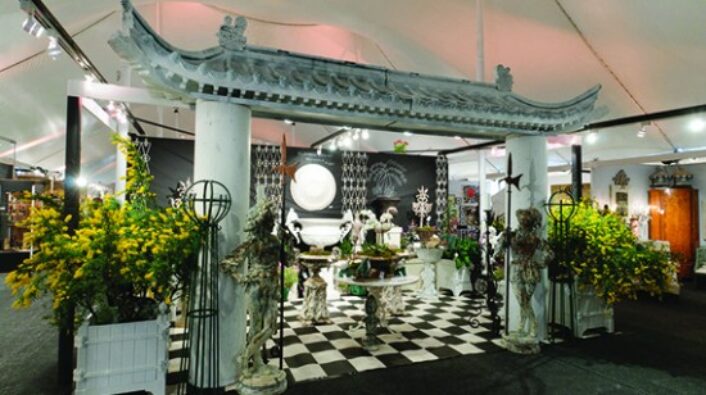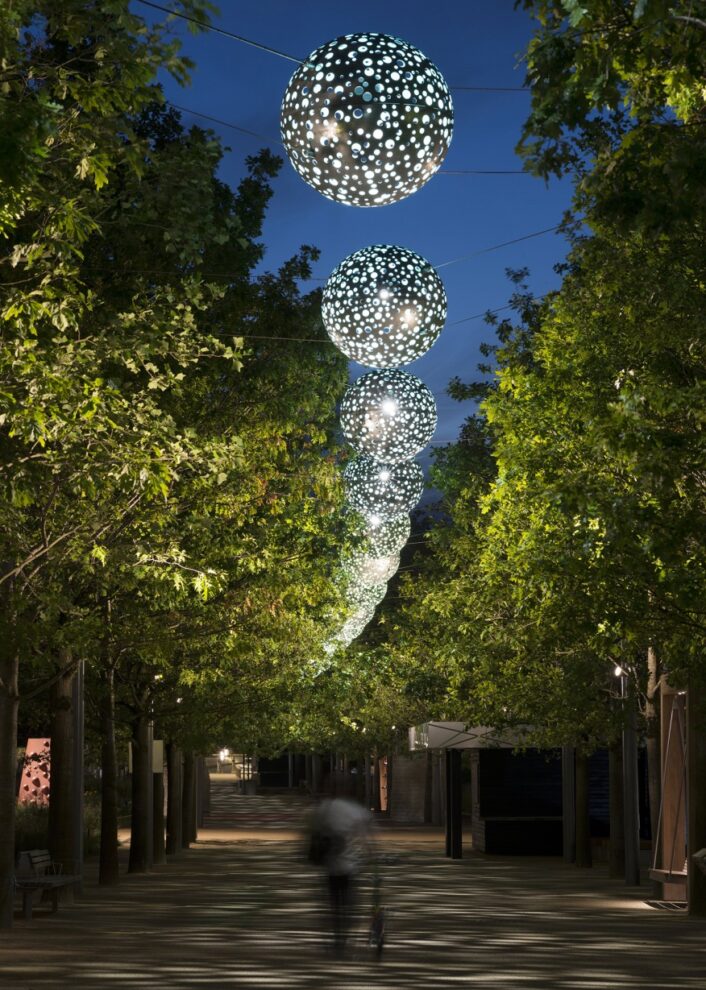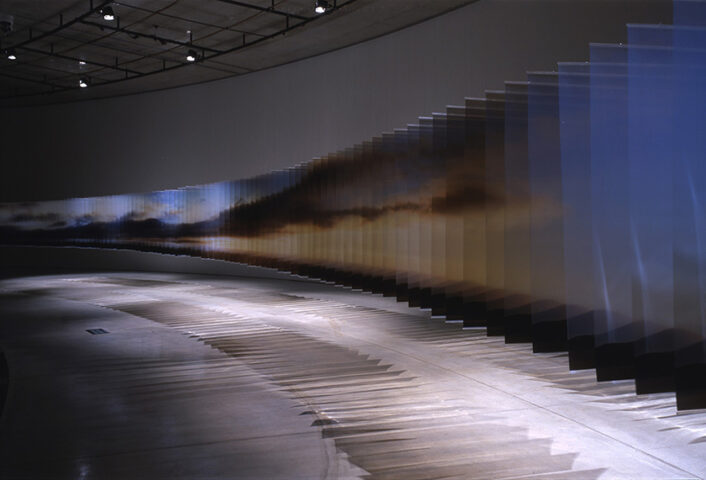Architecture
Human + Nature at the Morton Arboretum
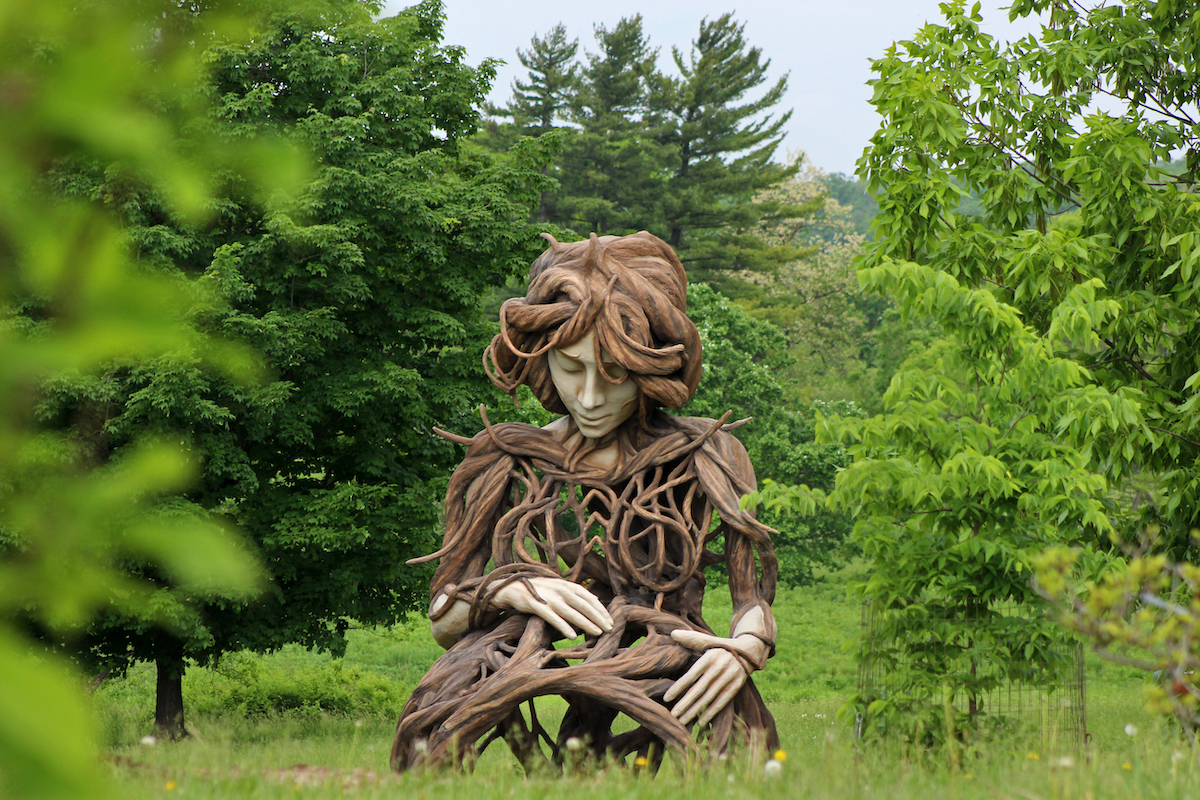
“UMI” is one of the five works that Popper debuted in May. The word “umi” itself means “life” in Swahili and “mother” in Arabic. The figure is 20.5-foot-tall and made from intertwined branches. In person, Umi appears to be quietly contemplating her pregnancy.
Image courtesy of: My Modern Met
This past summer, the Morton Arboretum unveiled an impressive outdoor exhibition titled, “Human + Nature.” The mind-blowing installation features five massive organic structures designed by the South African artist, Daniel Popper. Popper is an internationally-known, multi-disciplinary artist who is no stranger to designing large-scale, thought-provoking sculptures.
Popper realizes that producing an installation for the Morton Arboretum after the success of 2018’s “Troll Hunt” would be a difficult feat. The 2018 whimsical exhibition helped to set the outdoor museum’s attendance records. “Troll Hunt” stayed on the grounds for three years until it was dismantled earlier this year in preparation for Popper’s take on outdoor art. However different the two exhibitions are, there is no doubt that the arboretum is onto something big!
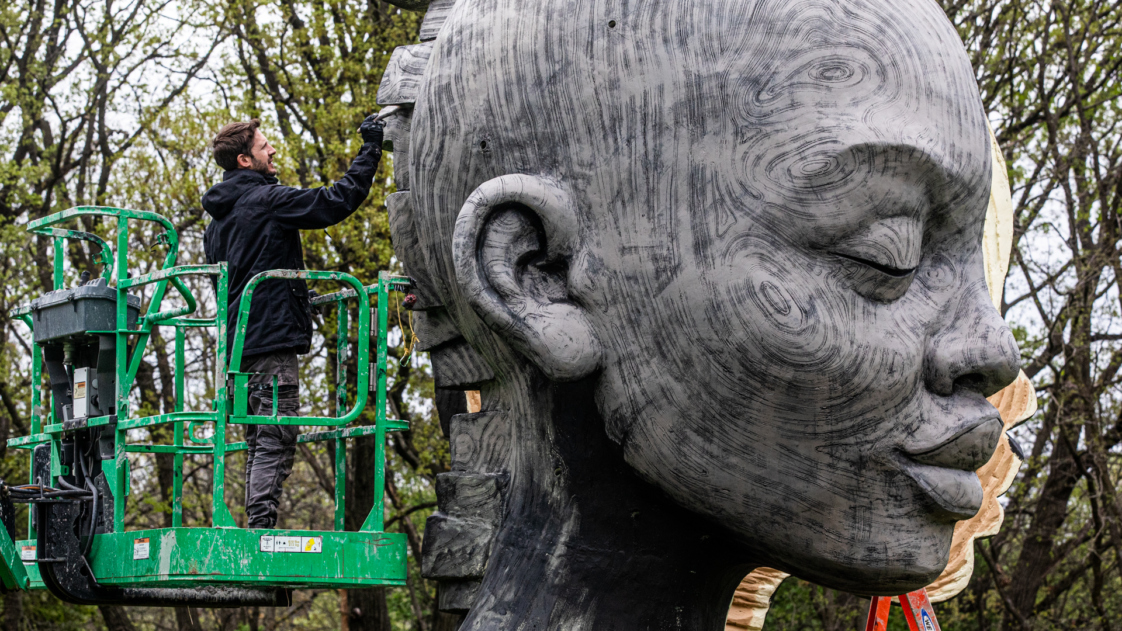
In the midst of the finishing touches.
Image courtesy of: ma3uqr
Even though the “Troll Hunt” exhibition was vastly successful, artists were not lining up to be the arboretum’s “second act.” Luckily, the arboretum was able to employ Sarah Sargent’s, manager of interpretation and exhibits, talents to lead the search. Designing outdoor art is quite challenging, especially on the enormous scale of the arboretum’s square footage. In addition, Chicago’s climate makes for material challenges and other considerations to be taken into account.
Someone from Sargent’s team discovered Popper on Pinterest; the artist began his career designing sculptures for music festivals around the world. Luckily for us in the United States, Popper has assistants and a team of builders that are based out of Raleigh, North Carolina, who help him create his vision.
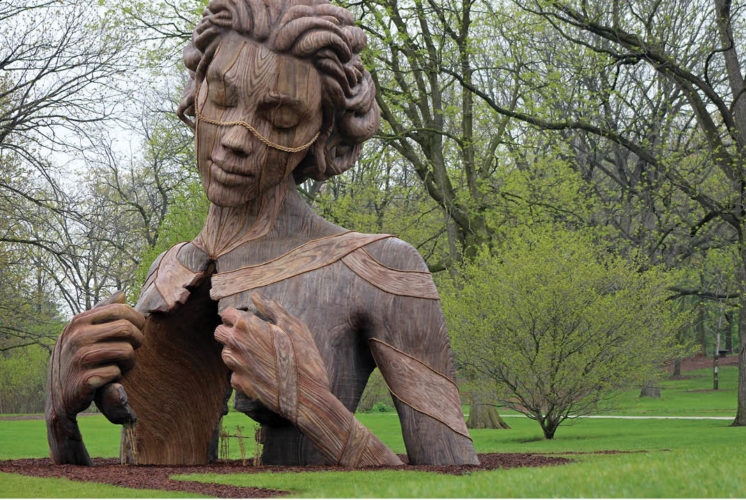
“Hallow,” like most of Popper’s pieces was constructed in Fort Lauderdale and Mexico.
Image courtesy of: Chicago Parent
Each sculpture is made of reinforced concrete, wood, fiberglass, and steel… and each weighs several metric tons. The largest footprint is 28-feet wide and 37-feet long. The sculptures were assembled by the arboretum’s staff in a meticulous, albeit slow, pace.
A couple of the installations are on the Morton Arboretum’s main path; however the rest are off the roadway… beckoning visitors to get out of their cars and come up close. The piece closest to the Visitor’s Center is called “Hallow.” She is considered to be Popper’s signature piece and quite similar to other oversized female figures the artist had previously designed. With only her upper body showing, the striking feature is the open chest cavity.

“Heartwood,” is also a female bust; but it is split into two spotlighting the inside. The interest lies in that the tree rings within resemble an actual fingerprint.
Image courtesy of: Time Out
The idea of the exhibition is to celebrate people’s connection to trees. We all know that trees are an organic connection to the natural world. They are able to refresh our minds and restore our creativity. From a practical perspective, trees are the reason humans have clean air to breathe. Beyond science, trees are a source of serenity and relaxation. But on the flip side, trees need humans to care for them, especially as our climate changes. By visiting these sculptures in a natural environment, Popper hopes that people are able to reimagine their relationship with these special living things.
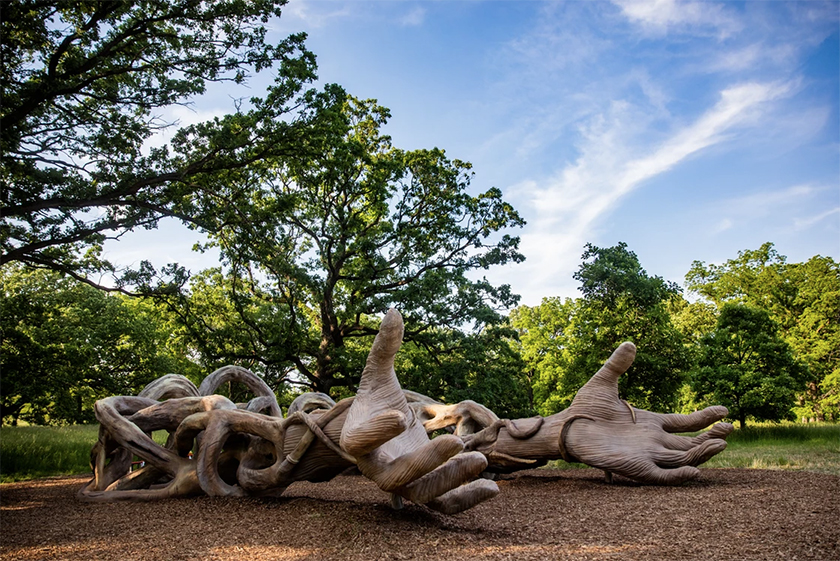
“Basilica” is a pair of outstretched hands that are connected by a maze made up of a collection of limbs set against ancient oak trees.
Image courtesy of: Daniel Popper
Sometimes, you have to contemplate the sculpture’s title in order to truly understand Popper’s intention. Basilicas were traditionally houses of worship… places to gather. As her arms stretch outward, a welcoming gathering space is presented; perhaps it is a modern-day basilica?
Per his website, Popper says, “We are bound to thrive if we are brave enough to expose our true nature as well as open up and receive the gifts that nature has to offer. We will heal, we will grow and we will flourish if we open our hearts and simultaneously nurture our internal and external gardens.” Indeed!
